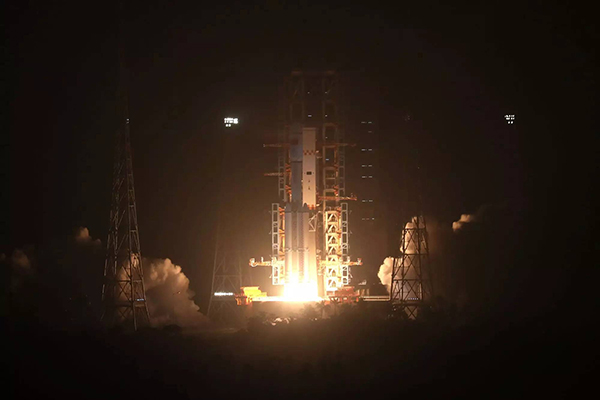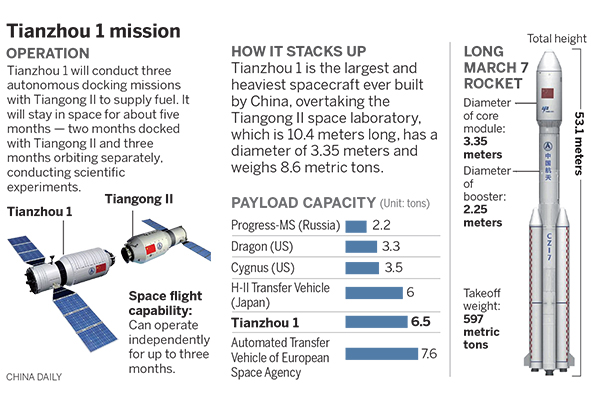
China launched its first cargo spacecraft at 7:41 pm on April 20 on a mission to test refueling technology and perform scientific experiments. Tianzhou 1, the nation’s biggest, heaviest spacecraft, blasted off from the Wenchang Space Launch Center in Hainan province.[Photo/Xinhua]
China launched its first cargo spacecraft on April 20 on a mission to test resupply technology for a planned manned space station that will enter service in about five years.
Tianzhou 1, the country’s largest and heaviest spacecraft, was lifted into space atop a Long March 7 carrier rocket at 7:41 pm from the Wenchang Space Launch Center in Hainan province.
According to the China Manned Space Agency, after entering orbit about 380 kilometers above Earth, the unmanned Tianzhou 1 is set for three dockings with the Tiangong II space laboratory, in orbit since September. The cargo craft will supply fuel to Tiangong II at each docking.
There are currently no astronauts aboard Tiangong II — the dockings will be controlled by computers.

Through the refueling process, scientists will test in-orbit resupply technology, which is essential to running a manned space station because without it, the station would run out of power and basic necessities and would fall back to the Earth much earlier than intended.
Huang Weifen, deputy research director of the Astronaut Center of China, said scientists will also use the Tianzhou 1 mission to test sanitation measures and microbe controls for supplies.
The cargo craft will perform four major groups of experiments, including embryonic stem cell research, according to Li Xuzhi, a senior scientist at the Chinese Academy of Sciences who helped design scientific applications for the spacecraft.
Tianzhou 1 will stay in space for about five months — two months docked with Tiangong II and three months orbiting separately, according to the agency.
If the mission is successful, it will make China the third nation to use its own technology to conduct in-orbit refueling, joining Russia and the United States.

